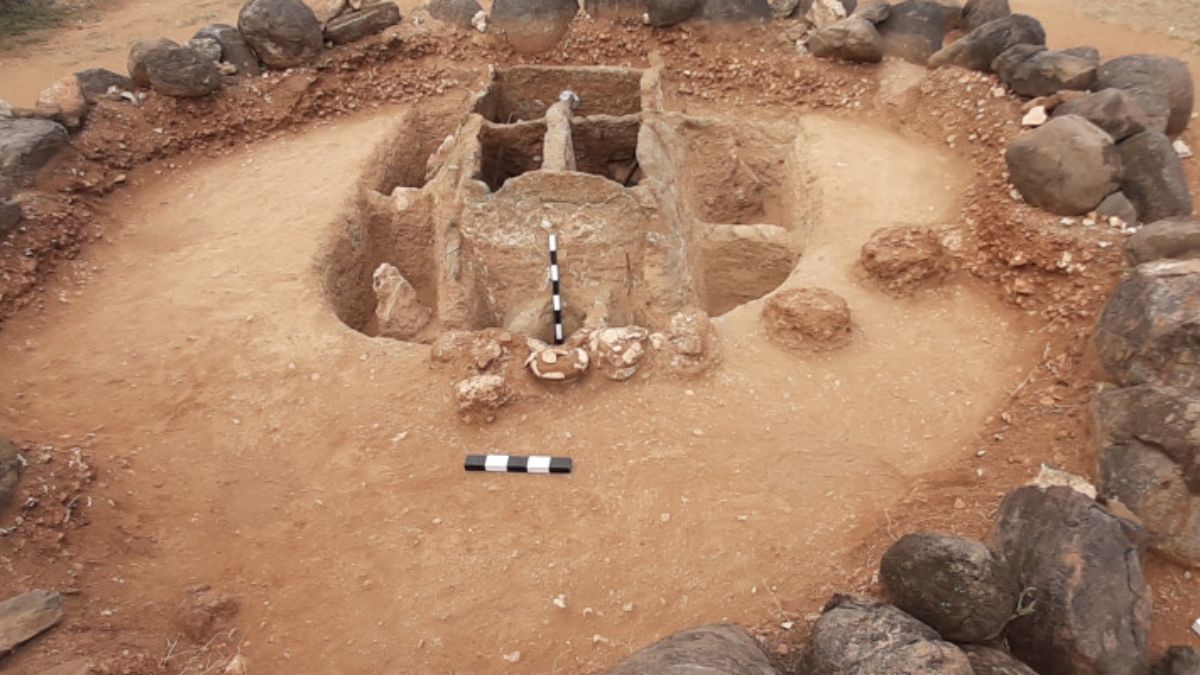A recent discovery in Tamil Nadu has raised questions about the origins of the Iron Age. Present-day Turkey is credited with being one of the earliest known regions for iron production, around the 13th Century BC.
Now, archaeologists have found iron objects at six sites in Tamil Nadu, dating back to as far as 2,953–3,345 BCE. This is an important discovery that could have wider implications.
Let’s take a closer look.
What have archaeologists found?
A new study titled Antiquity of Iron: Recent Radiometric Dates from Tamil Nadu by K Rajan and R Sivanantham suggests that the southern state was among the first places in the world where smelted iron was used.
Early iron came in two types– meteoritic and smelted. Smelted iron is extracted from ores and is responsible for the beginning of iron technology with mass production.
Meteoritic iron comes from meteorites that have fallen to Earth.
The report by the Tamil Nadu State Department of Archaeology (TNSDA) claims that people in the state knew about and used smelting iron, which needs temperatures between 1,200°C and 1,400°C, around 5,300 years back.
The findings were recently unveiled by Tamil Nadu Chief Minister MK Stalin , who said the history of the Indian subcontinent can no longer fail to notice the state. “It must, in fact, begin here,” he said.
The latest discovery suggests that the process of extracting, smelting, forging and shaping iron to form tools and other objects may have begun in the Indian subcontinent, as per BBC.
Archaeologists collected samples from Adichchanallur, Sivagalai, Mayiladumparai, Kilnamandi, Mangadu and Thelunganur sites in Tamil Nadu.
They found that a paddy sample unearthed from a burial urn in Sivagalai can be dated back to 1155 BCE. Charcoal and potsherds (broken pieces of ceramic material) discovered from the same site are traced as far back as 2953 BCE to 3345 BCE, which makes it the first known use of iron technology worldwide, reported Indian Express.
Impact Shorts
More ShortsSamples from Mayiladumparai were dated to 2172 BCE. At Kilnamandi, sarcophagus (stone coffin) burial dated to 1692 BCE were unearthed.
They also discovered iron made hoe-spades, spears, knives, arrowheads, chisels, axes and swords.
The Iron Age is long believed to have started in the Hittite Empire in Anatolia, where iron technology likely emerged around 1300 BCE. But the Tamil Nadu findings disprove this.
Why it is important
The findings assume significance as it means the Iron Age perhaps began a millennium earlier than previously thought.
“The discovery is of such great importance that it will take some more time before its implications sink in,” Dilip Kumar Chakrabarti, a professor of South Asian archaeology at Cambridge University, told Indian Express.
Experts in the study say this is a turning point in Indian archaeology, which positions Tamil Nadu as the leading hub of early metallurgy globally.
Speaking to BBC, historian Osmund Bopearachchi of the Paris-based French National Centre for Scientific Research pointed out to a key discovery — an iron sword from a burial site, made of ultra-high-carbon steel from the 13th–15th Century BC.
“We know that the first signs of real steel production date back to the 13th Century BC in present-day Turkey. The radiometric dates seem to prove that the Tamil Nadu samples are earlier,” he said.
Oishi Roy, an archaeologist at Indian Institute of Science Education and Research (ISSER), told BBC that the early steel in Tamil Nadu shows that people there “were iron makers, not just users - a technologically advanced community evolving over time”.
Experts say the findings in Tamil Nadu could change our understanding of the Iron Age and iron smelting in the Indian subcontinent. Also, “what these digs testify is to the existence of a distinctly sophisticated style of civilisation,” Nirmala Lakshman, author of The Tamils - A Portrait of a Community, said to BBC.
However, some experts advise caution before reaching a conclusion. According to Parth R Chauhan, a professor of archaeology at ISSER, iron technology likely emerged “independently in multiple regions”.
He told BBC that the “earliest evidence remains uncertain because many regions of the world have not been properly researched or archaeological evidence is known but has not been dated properly”.
With inputs from agencies
)